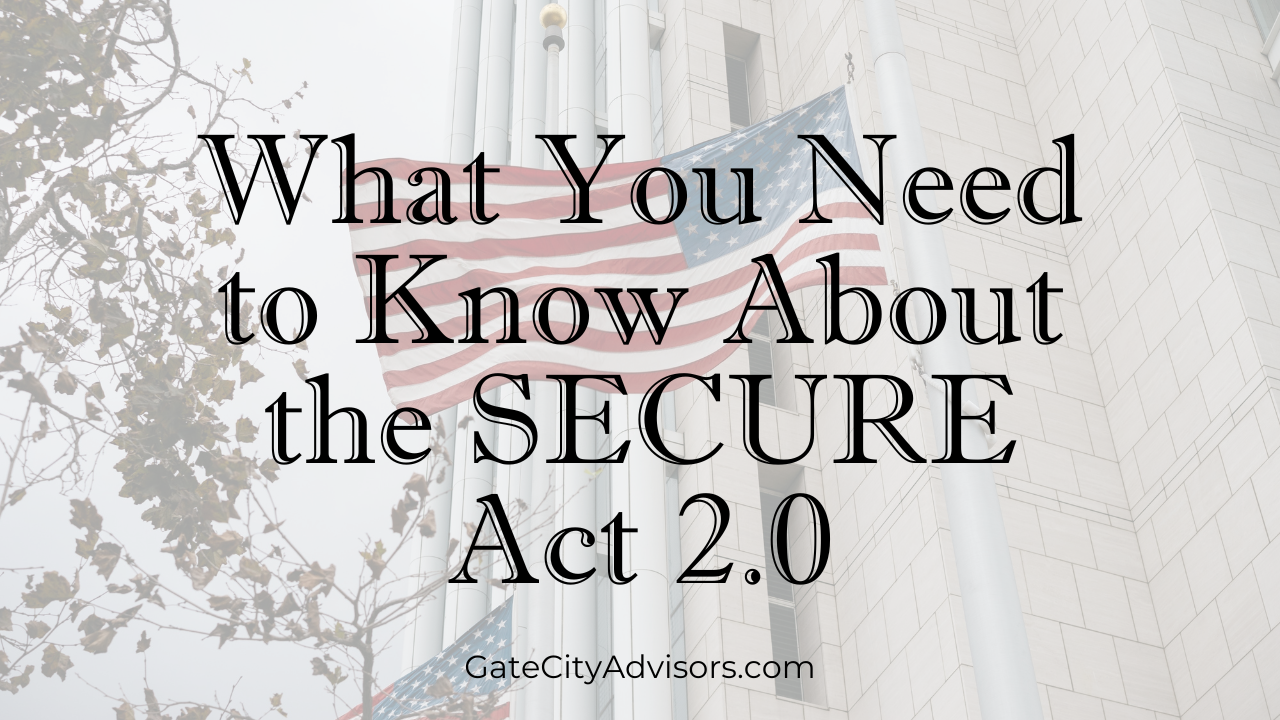What You Need to Know About the SECURE Act 2.0

The SECURE Act 2.0, also known as the Securing a Strong Retirement Act of 2022, was recently passed by Congress as part of the Consolidated Appropriates Act of 2023. The bill builds upon the original SECURE Act, which was signed into law in December 2019 and made significant changes to the retirement landscape. The SECURE Act 2.0 aims to further improve access to retirement accounts, by promoting participation and preserving savings.
The SECURE Act 2.0 includes many provisions, here are a few of the highlights:
Significant Changes to RMDs
- RMD commencement age is increased to 73 starting in 2023 and 75 starting in 2033. If you are turning 72 in 2023 and have already set up a distribution plan for your RMDs, you may want to consider updating your plan. If you turned 72 in 2022 or earlier, you need to continue taking your RMDs.
- The penalty for failing to take your RMD will significantly decrease from 50% to 25% of the missed distribution amount. The penalty may be reduced to 10% in certain circumstances.
- Roth accounts in employer-sponsored retirement plans will be exempt from RMDs starting in 2024.
Expanded Roth Rules
- Small business owners can now open and contribute to Roth SIMPLE IRAs and Roth SEP IRAs.
- Employers will now be able to match employee retirement plan contributions in their Roth accounts.
- This bill did not include any provisions that would limit or prevent the use of “back door” Roth contributions.
Changes to Employer-Sponsored Plans
- In 2025, businesses adopting new 401(k) and 403(b) plans are required to automatically enroll eligible employees with a contribution rate of at least 3%.
- Plan participants may withdraw up to $2,500 in emergency savings free of taxes and the early withdrawal penalty, if their defined contribution plan offers the emergency savings account.
- Individuals impacted by federally declared disasters can take up to $22,000 penalty free and take three years to pay the income tax and repay the funds to their account.
- Starting in 2024, participants can request their student loan payments be matched by their employer within their retirement accounts.
Increased Catch-Up Contributions
- In 2024, the IRA catch-up contribution limit will be indexed to inflation, which will give it the chance toincrease every year. Today, the IRA catch-up contribution limit is $1,000.
- In 2025, workplace plan participants age 60 to 63 can make catch-up contributions up to $10,000annually. If you earned more than $145,000 in the prior calendar year, all catch-up contributions mustbe made to a Roth account.
529 Plan Updates
- 529 plan assets can be rolled over to a Roth IRA for the beneficiary. The rollover is subject to theannual Roth contribution limits and an aggregate lifetime limit of $35,000.
Overall, the SECURE Act 2.0 is a comprehensive piece of legislation that aims to improve access to retirement savings and provide additional protections for retirement savers. As always, speak to your financial advisor or tax professional to further understand how the SECURE 2.0 bill impacts you.
Want help building YOUR Retirement Income Toolkit?

